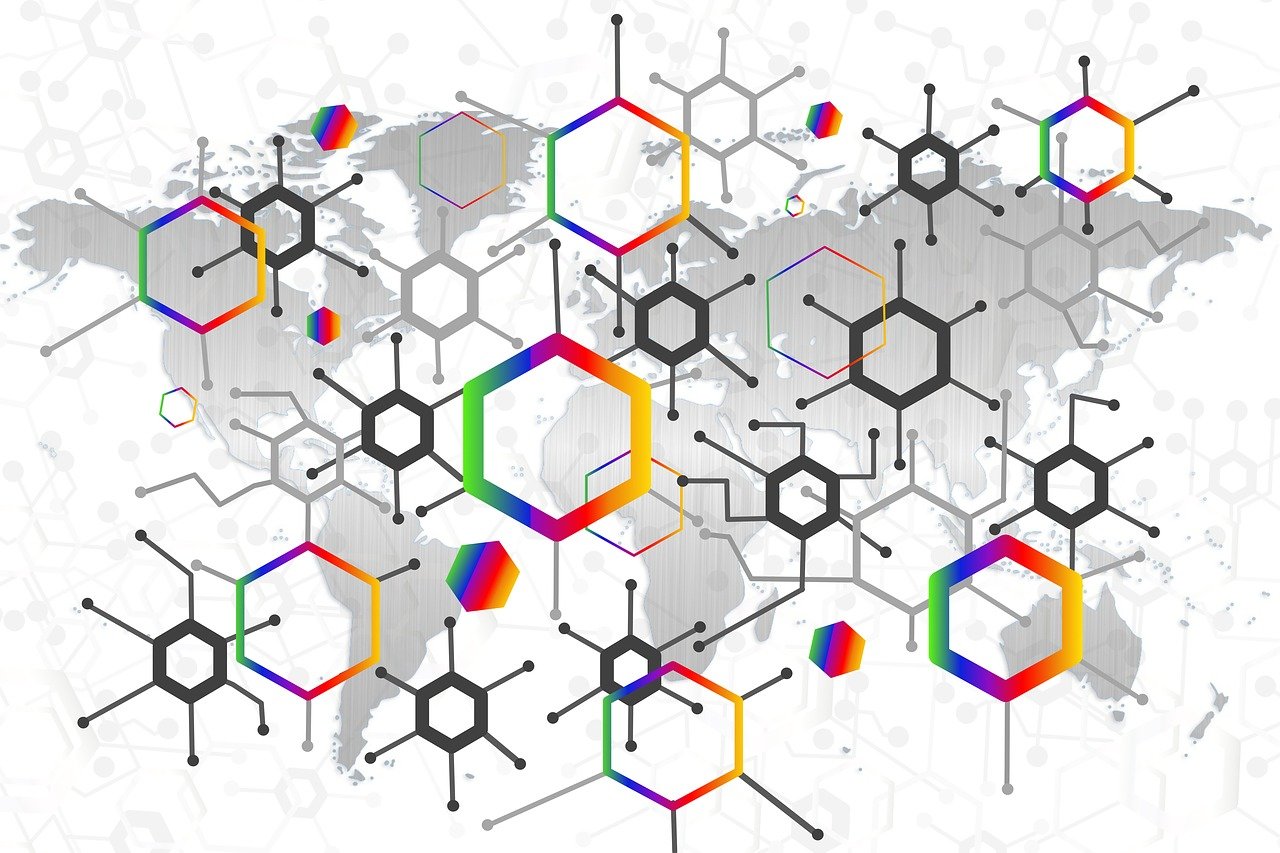In today’s rapidly changing world, businesses face increasing pressure to address their impact on the environment and take steps towards sustainability. This is where climate action plans come into play. A climate action plan is a comprehensive strategy that organizations can implement to reduce their carbon footprint, mitigate climate change, and promote environmental stewardship. By implementing such a plan, businesses can not only fulfill their corporate social responsibility but also gain a competitive edge in an increasingly environmentally conscious market. In this article, we will explore the importance of climate action plans for businesses, their key components, and how consulting with a knowledgeable lawyer can ensure a smooth and effective transition towards a more sustainable future.

Understanding Climate Action Plans
What is a Climate Action Plan?
A Climate Action Plan (CAP) is a comprehensive strategy developed by governments, organizations, and businesses to mitigate and adapt to climate change. It outlines specific actions and policies aimed at reducing greenhouse gas emissions and enhancing resilience to the impacts of climate change. CAPs serve as roadmaps for achieving sustainability and reducing carbon footprints.
Why Are Climate Action Plans Important?
Climate Action Plans are crucial because they provide a structured approach to addressing climate change, which is one of the most pressing challenges of our time. By implementing CAPs, businesses can contribute to global efforts in reducing greenhouse gas emissions, protecting the environment, and building a sustainable future. CAPs not only help combat climate change but also offer numerous benefits to those who adopt them.
Components of a Climate Action Plan
A comprehensive Climate Action Plan typically includes several key components designed to address different aspects of sustainability and climate change. These components may vary depending on the organization or the jurisdiction, but some common elements include:
-
Greenhouse Gas Emissions Inventory: This component involves assessing and quantifying the organization’s emissions by sector and source. It provides a baseline for measuring progress and identifying areas for improvement.
-
Mitigation and Adaptation Strategies: CAPs outline specific strategies to reduce greenhouse gas emissions and adapt to the impacts of climate change. These strategies may include energy efficiency measures, renewable energy adoption, sustainable transportation, waste management, land use planning, and water conservation.
-
Implementation and Monitoring Framework: A CAP should include a detailed plan for implementing the identified strategies, along with a monitoring framework to track the progress and success of these actions. Regular monitoring ensures accountability and allows for adjustments if needed.
-
Stakeholder Engagement: CAPs should involve engagement with relevant stakeholders, such as employees, customers, communities, and governmental organizations. Engagement helps build partnerships, gather input, and generate support for the plan’s implementation.
-
Financial Considerations: CAPs also need to address the financial aspects of implementation. This includes identifying potential funding sources, estimating costs and benefits, and exploring financial incentives or assistance programs that may be available.
Benefits of Implementing Climate Action Plans
Reduction of Carbon Footprint
Implementing a Climate Action Plan leads to a significant reduction in carbon footprint. By adopting energy-efficient practices, transitioning to renewable energy sources, and implementing sustainable transportation alternatives, businesses can effectively reduce their greenhouse gas emissions. This not only helps combat climate change but also demonstrates a commitment to environmental responsibility and sustainability.
Cost Savings and Economic Opportunities
Climate Action Plans offer numerous cost-saving opportunities for businesses. By implementing energy-efficient technologies and practices, companies can reduce their energy consumption, lower utility bills, and increase operational efficiency. Additionally, transitioning to renewable energy sources can provide long-term cost stability and reduce reliance on fossil fuels, which are subject to price volatility. CAPs also open up new economic opportunities, such as the development of green technologies, renewable energy markets, and sustainable supply chains.
Improved Public Health
Climate change has significant impacts on public health, including increased heat-related illnesses, air pollution-related diseases, and the spread of vector-borne diseases. By implementing Climate Action Plans, businesses can contribute to improving public health by reducing air pollution, enhancing water and food security, and creating safer and healthier environments for communities. These actions can lead to reduced healthcare costs and improved overall well-being.
Enhanced Resilience to Climate Change
Climate Action Plans help businesses build resilience to the impacts of climate change. By assessing and understanding their vulnerability to climate hazards, such as extreme weather events, rising sea levels, and water scarcity, businesses can develop strategies to protect their operations, infrastructure, and supply chains. This resilience ensures business continuity and minimizes potential disruptions caused by climate-related events.
Positive Brand Image and Reputation
Implementing a Climate Action Plan can enhance a business’s brand image and reputation. As consumers become more environmentally conscious, they are increasingly inclined to support and do business with organizations that demonstrate environmental responsibility. By adopting sustainable practices and reducing their carbon footprint, businesses can attract environmentally conscious customers, investors, and employees, enhancing their brand value and reputation.
Steps to Develop an Effective Climate Action Plan
Developing an effective Climate Action Plan requires a systematic and comprehensive approach. The following steps outline the key processes involved:
Conducting a Greenhouse Gas Inventory
The first step in developing a Climate Action Plan is to conduct a comprehensive inventory of greenhouse gas emissions. This involves quantifying emissions from various sources, such as energy consumption, transportation, waste management, and other operational activities. A detailed greenhouse gas inventory provides a baseline to measure progress and identify priority areas for emission reduction.
Setting Ambitious and Achievable Goals
Based on the greenhouse gas inventory, businesses need to set ambitious yet achievable goals for emission reduction and sustainability. These goals should align with national and international targets, industry standards, and any applicable regulations or commitments. Goals should be specific, measurable, achievable, relevant, and time-bound (SMART), providing a clear direction for the organization.
Identifying and Prioritizing Mitigation Strategies
After setting goals, businesses should identify and prioritize mitigation strategies to reduce their carbon footprint. This may involve adopting energy-efficient technologies, transitioning to renewable energy sources, implementing waste reduction measures, optimizing transportation and logistics, and promoting sustainable procurement practices. It is essential to consider the environmental impact, cost-effectiveness, and feasibility of each strategy.
Developing Implementation and Monitoring Frameworks
Once mitigation strategies are identified, businesses need to develop a detailed implementation plan. This plan should outline the specific actions, responsibilities, timelines, and resource requirements for each strategy. Additionally, an effective monitoring framework should be established to track progress, measure outcomes, and ensure accountability. Regular monitoring allows businesses to identify and address any deviations from the plan and make informed decisions for continuous improvement.
Engaging Stakeholders and Building Partnerships
Successful Climate Action Plans require active engagement and collaboration with stakeholders. This includes internal stakeholders, such as employees, executives, and shareholders, as well as external stakeholders, such as customers, local communities, regulatory agencies, and other organizations within the industry. Engaging stakeholders fosters buy-in, generates innovative ideas, and builds partnerships to support the plan’s implementation.
Best Practices for Climate Action Planning
Aligning with Local, National, and International Policies
When developing a Climate Action Plan, it is essential to align with local, national, and international policies and regulations. This ensures compliance and prevents potential conflicts or legal issues. By aligning with established frameworks, businesses can take advantage of available incentives, grants, and funding opportunities.
Ensuring Transparency and Accountability
Transparency and accountability are crucial for successful Climate Action Planning. Businesses should strive to communicate their goals, progress, and outcomes to stakeholders and the public. By showcasing commitment to sustainability, businesses can build trust, attract customers, and maintain a positive reputation.
Utilizing Data and Technological Innovations
Climate Action Planning requires a data-driven approach. By collecting and analyzing relevant data, businesses can identify areas for improvement, measure progress, and make informed decisions. Technological innovations, such as smart meters, sensors, and data analytics, can provide valuable insights, optimize resource use, and drive efficiency.
Adopting a Long-term Perspective
Climate Action Planning should consider long-term sustainability and resilience. Businesses should aim for continuous improvement and adaptability to changing environmental conditions and emerging trends. By taking a long-term perspective, businesses can future-proof their operations and remain competitive in a rapidly evolving business landscape.
Considering Social Equity and Environmental Justice
Climate Action Plans should prioritize social equity and environmental justice. By considering the needs and interests of vulnerable communities and individuals, businesses can ensure that their actions do not disproportionately harm certain populations. By promoting equitable access to sustainable resources and opportunities, businesses can contribute to a fair and just transition towards a low-carbon economy.
Examples of Successful Climate Action Plans
City-Level Climate Action Plans
Many cities around the world have successfully implemented Climate Action Plans to address the unique challenges and opportunities they face. For example, the City of Stockholm, Sweden, has a comprehensive CAP that includes measures to promote sustainable transportation, energy efficiency, and waste management. Through its plan, Stockholm has reduced its greenhouse gas emissions by over 44% since 1990 while experiencing economic growth.
Corporate Climate Action Plans
Numerous corporations have adopted ambitious Climate Action Plans to reduce their carbon footprint and demonstrate environmental leadership. Companies like Microsoft, Google, and Unilever have set aggressive emissions reduction targets, invested in renewable energy projects, and implemented sustainable supply chain practices. These initiatives not only help combat climate change but also drive innovation, attract customers, and enhance brand value.
Climate Action Plans for Universities and Institutions
Universities and other educational institutions have recognized the importance of sustainability and have developed Climate Action Plans. For example, the University of California set a goal to become carbon-neutral by 2025 through a combination of energy efficiency measures, renewable energy procurement, and behavior change campaigns. These initiatives not only reduce emissions but also provide valuable educational opportunities for students and the community.
Legal Considerations in Climate Action Planning
Compliance with Environmental Regulations
When developing a Climate Action Plan, businesses should ensure compliance with relevant environmental regulations. This includes local, national, and international laws and policies related to energy use, emissions, waste management, and other sustainability aspects. Non-compliance can result in legal penalties, reputational damage, and disruption to operations.
Intellectual Property and Patent Protection
Innovations and technologies developed as part of a Climate Action Plan may be subject to intellectual property protection. Businesses should carefully consider patenting or trademarking any proprietary technologies or processes to prevent unauthorized use or infringement. Intellectual property protection can provide a competitive advantage and attract investors or partners.
Contracts and Agreements for Green Technologies
Implementing a Climate Action Plan often involves partnerships and collaborations with technology providers, contractors, and suppliers. Businesses should ensure that contracts and agreements explicitly outline the rights, responsibilities, and obligations of all parties involved. These agreements should address issues related to intellectual property, warranties, liability, and dispute resolution.
Risk Assessment and Liability Management
Climate Action Planning should include a thorough assessment of potential risks and liabilities associated with adaptation and mitigation strategies. Businesses should identify and mitigate risks to minimize potential financial, legal, and reputational impacts. Liability management strategies, such as insurance coverage and contractual indemnification provisions, should be considered to protect against potential risks.

Financing Climate Action Plans
Public Funding and Grants
Government entities, both at the local and national levels, often provide funding opportunities and grants to support Climate Action Plans. These sources of public funding can help offset the costs associated with implementing sustainable practices, conducting energy audits, investing in renewable energy systems, and adopting green technologies.
Private Sector Investments
Private sector investments offer another avenue for financing Climate Action Plans. Impact investors, sustainable finance institutions, and socially responsible investment funds are increasingly interested in supporting businesses that prioritize sustainability. Funding options include equity investments, loans, and bonds specifically targeted towards sustainability initiatives.
Carbon Market and Trading
The carbon market provides a mechanism for businesses to financially benefit from emission reductions. Through emissions trading, businesses can sell excess carbon credits or purchase credits to meet compliance obligations. Participating in carbon markets can generate additional revenue streams and incentivize emission reduction efforts.
Crowdfunding and Community Contributions
Crowdfunding platforms offer an alternative way to finance Climate Action Plans. By reaching out to the community and interested stakeholders, businesses can raise funds for sustainability projects or initiatives. Crowdfunding campaigns can also enhance community engagement, increase public awareness, and foster a sense of ownership in the Climate Action Plan.
Challenges and Barriers to Climate Action Planning
Political and Institutional Resistance
Climate Action Planning can face political and institutional resistance, particularly in regions or industries with conflicting interests or outdated policies. It is important to engage stakeholders, build coalitions, and communicate the economic and social benefits of sustainable practices to overcome these barriers.
Limited Financial Resources
Implementing Climate Action Plans can require significant investments. Limited financial resources may pose a barrier for some businesses, especially small and medium-sized enterprises. Exploring funding opportunities, leveraging partnerships, and prioritizing high-impact strategies can help overcome financial limitations.
Lack of Public Awareness and Support
Public awareness and support are crucial for the success of Climate Action Plans. Businesses may face challenges in generating public interest or understanding of the importance of sustainability initiatives. Communication and educational campaigns can help raise awareness, educate the public, and gain support for the plan.
Complexity of Data Analysis and Modeling
Developing and implementing a Climate Action Plan requires complex data analysis and modeling. The availability and quality of data, as well as the expertise required for analysis, can pose challenges for businesses. Partnering with experts, leveraging technology solutions, and investing in data collection and analysis capabilities can help overcome these challenges.

Case Studies: How Businesses Benefited from Climate Action Plans
Case Study 1: Company X Reduced Carbon Emissions and Increased Profitability
Company X, a manufacturing company, developed a comprehensive Climate Action Plan that included energy efficiency measures, renewable energy installations, and supply chain optimization. By implementing these strategies, Company X managed to reduce its carbon emissions by 30% within five years. The company not only achieved significant environmental benefits but also experienced a decrease in energy costs, improved operational efficiency, and increased profitability.
Case Study 2: Small Business Y Enhanced Resilience through Sustainable Practices
Small Business Y, a retailer located in a coastal town, faced increasing risks from sea-level rise and extreme weather events. In response, the business developed a Climate Action Plan that included measures to fortify its premises, diversify its suppliers, and invest in renewable energy systems. As a result, Small Business Y successfully withstood a major storm event without significant damage, ensuring business continuity and protecting its bottom line.
Case Study 3: Industry Leader Z Gained Competitive Advantage with Climate Action Plan
Industry Leader Z, a multinational corporation, recognized the importance of sustainability and developed an ambitious Climate Action Plan. By optimizing its supply chain, adopting circular economy principles, and investing in renewable energy projects, Industry Leader Z became a recognized leader in sustainability within its industry. This enhanced its brand reputation, attracted environmentally conscious customers, and provided a competitive edge over its competitors.
FAQs about Climate Action Plans
What is the role of businesses in climate action planning?
Businesses play a crucial role in climate action planning as they are significant contributors to greenhouse gas emissions. By implementing Climate Action Plans, businesses can reduce their carbon footprint, promote sustainability, and contribute to global efforts in combating climate change.
Are there any financial incentives available for implementing climate action plans?
Yes, there are various financial incentives available for businesses that implement Climate Action Plans. This includes grants, funding programs, tax credits, and access to capital from private sector investors interested in sustainability initiatives.
How can adopting a climate action plan benefit my company’s reputation?
Adopting a climate action plan can enhance a company’s reputation by demonstrating a commitment to sustainability and environmental responsibility. It can attract environmentally conscious customers, investors, and employees who value and support businesses with strong sustainability credentials.
What are the potential legal risks associated with climate action planning?
Potential legal risks associated with climate action planning include non-compliance with environmental regulations, intellectual property infringement, contractual disputes, and liability for any potential environmental damages. It is important to seek legal advice and ensure compliance with applicable laws and regulations.
How long does it typically take to develop and implement a climate action plan?
The timeline for developing and implementing a climate action plan can vary depending on the complexity of the organization and the scope of the plan. It may take several months to a year or more to conduct necessary assessments, gather stakeholder input, develop strategies, and establish implementation and monitoring frameworks.
NOTE: The content provided in this article is intended to serve as general information only and should not be considered as legal advice. For specific legal advice regarding climate action planning or any other legal matter, it is recommended to consult with a qualified attorney familiar with environmental law and regulations.




























